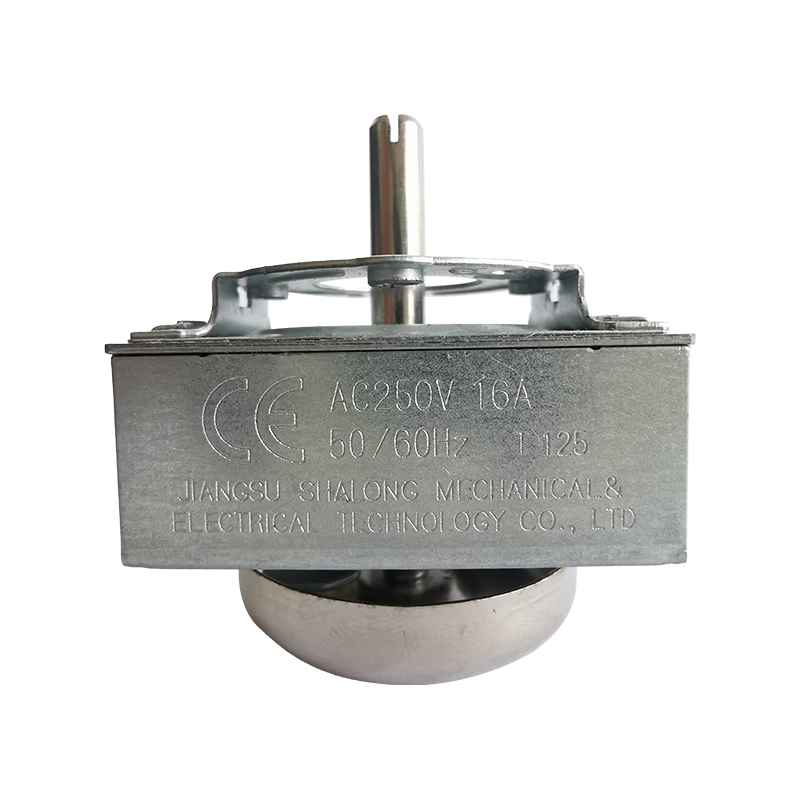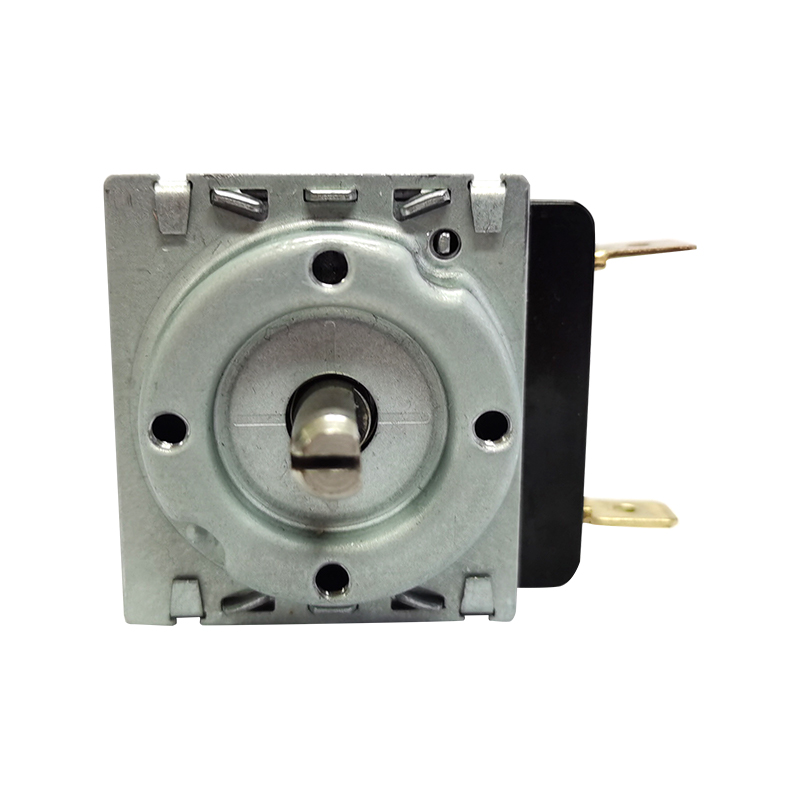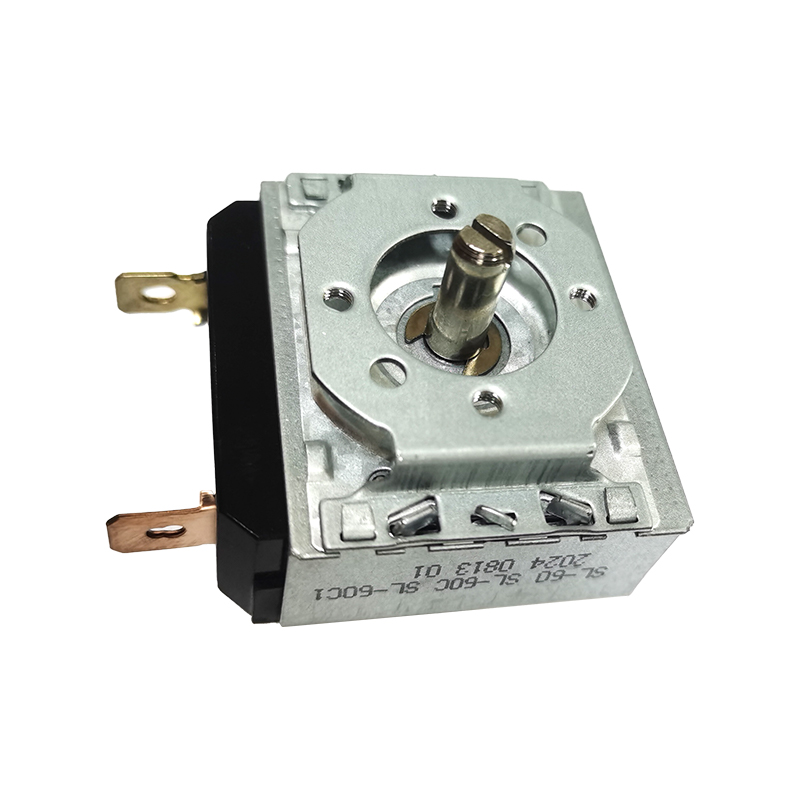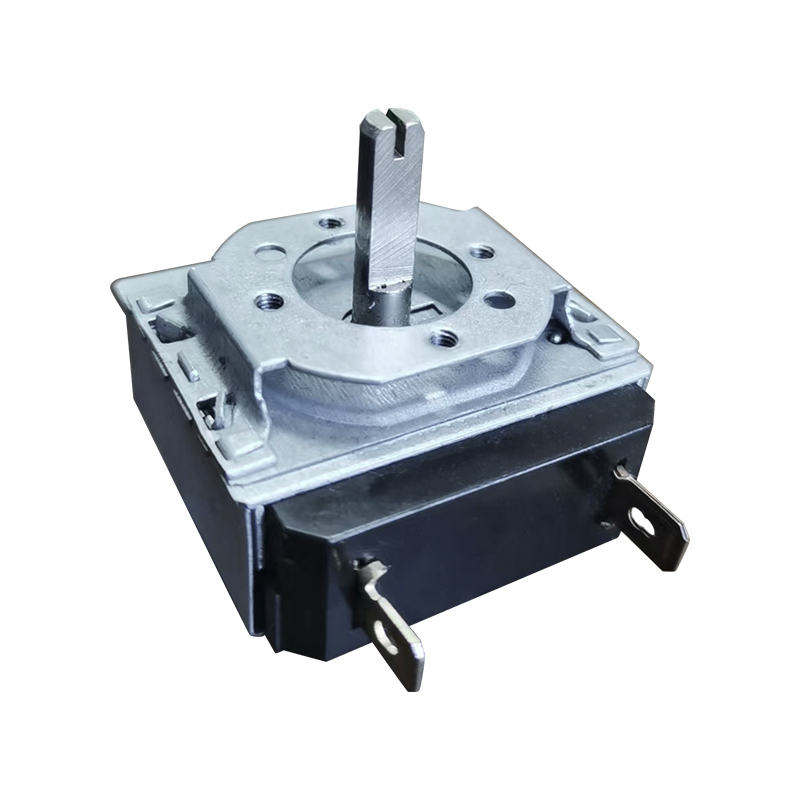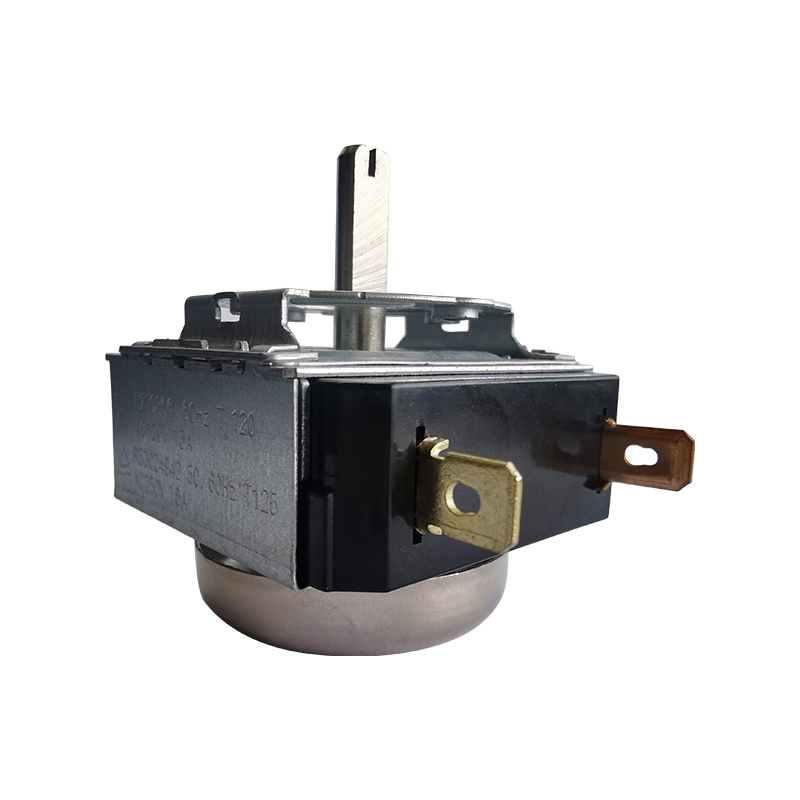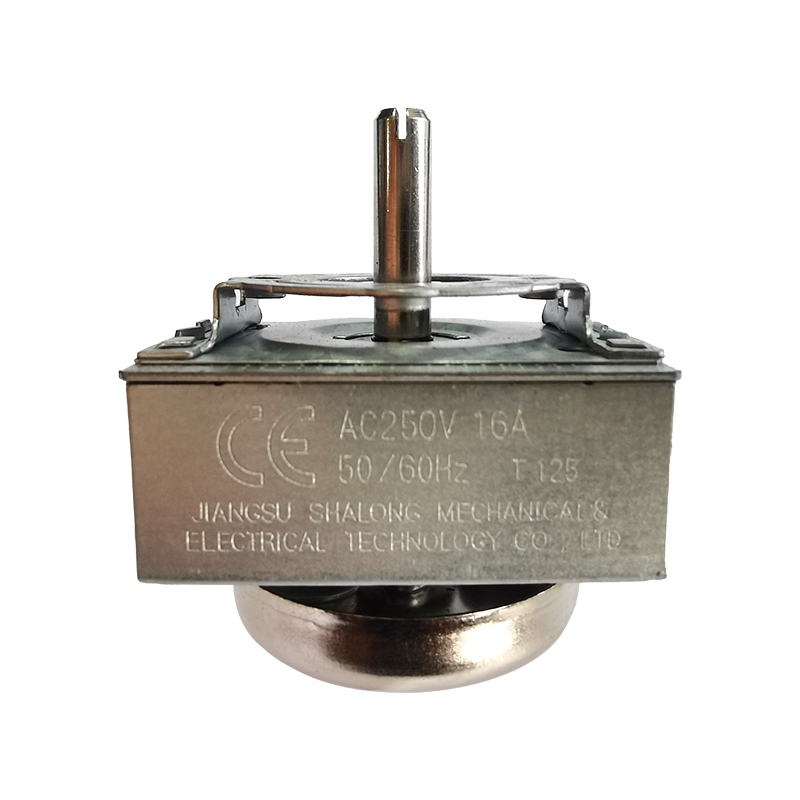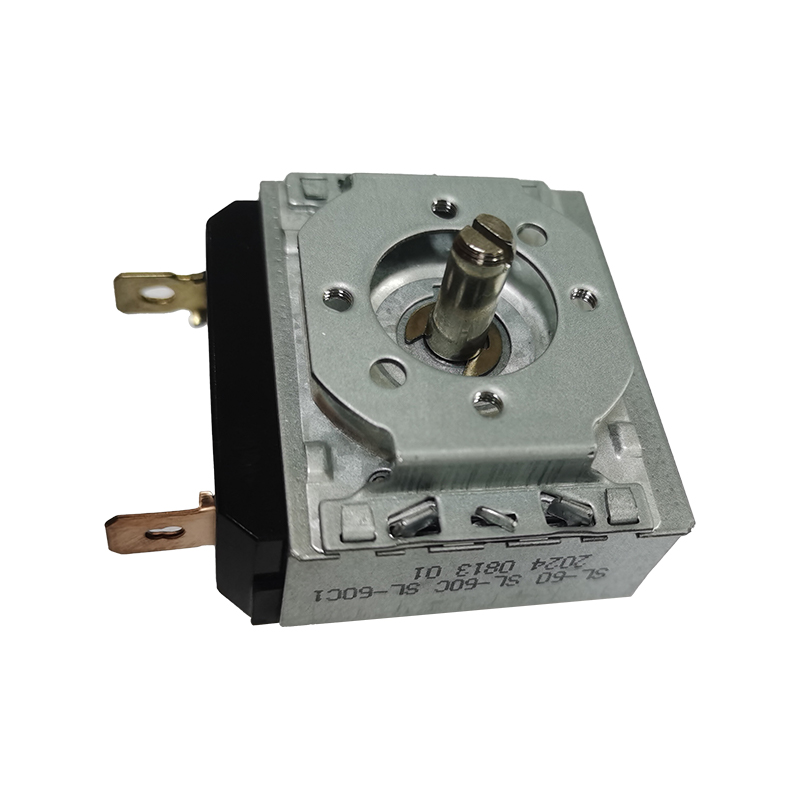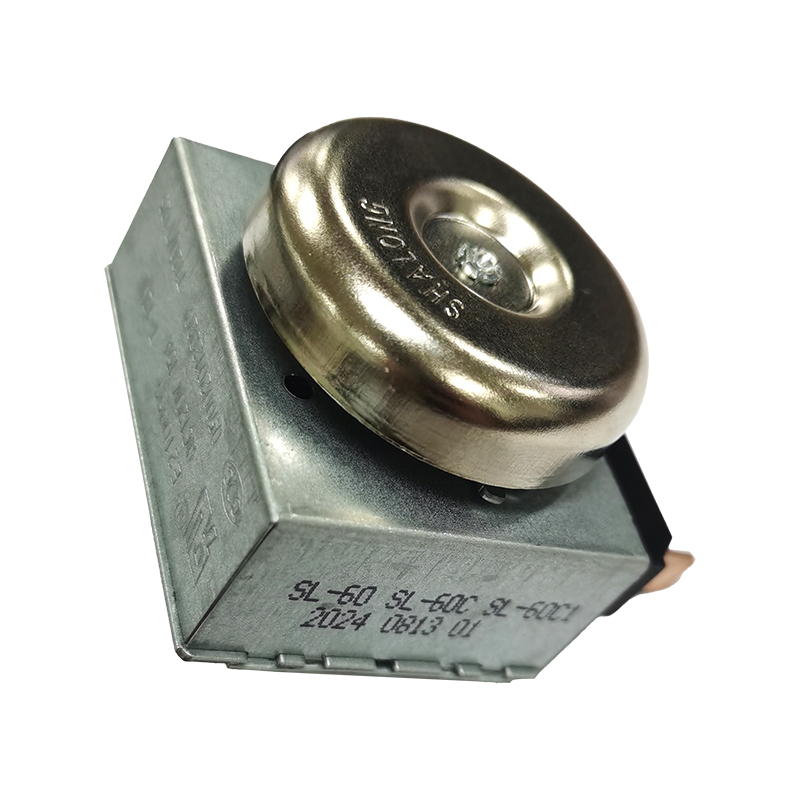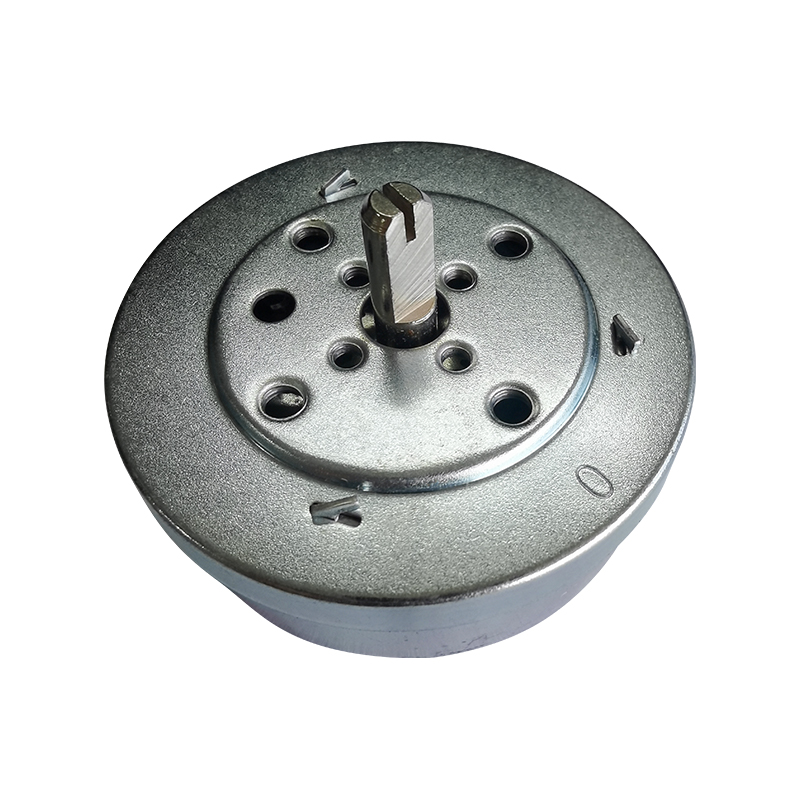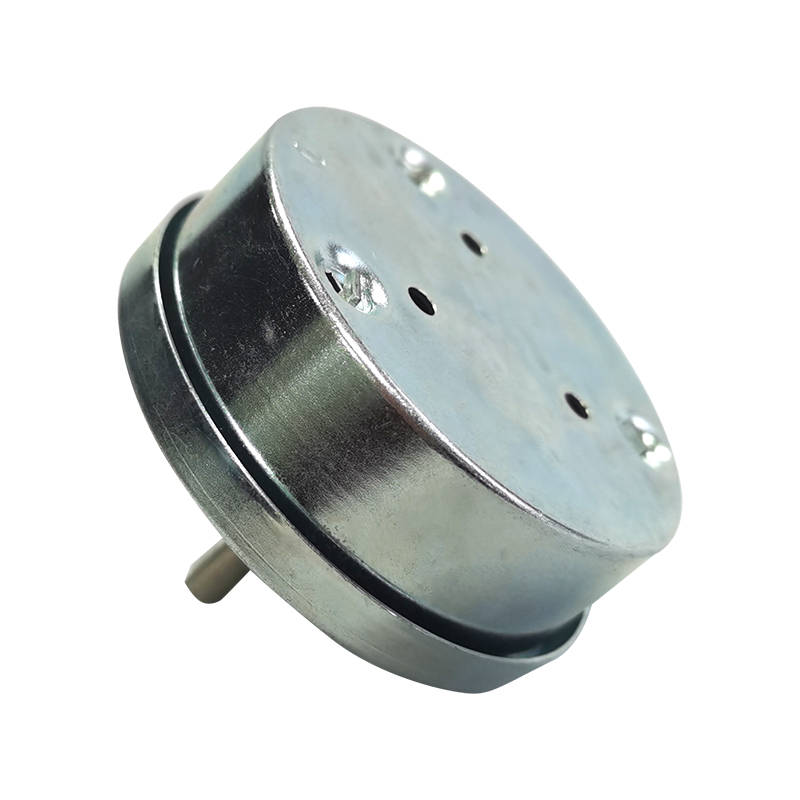An Oven Mechanical Timer is a device based on mechanical structure and spring power. Its main function is to determine the running time of the heating element by controlling the passage of time, thereby achieving precise control of the oven heating time. This timer is widely used in traditional ovens, especially in old-fashioned or economical ovens without electronic control systems.
A typical mechanical timer usually includes the following core components:
Spring mechanism (spring): This is the core power source of the timer. It stores energy through manual or automatic winding (i.e. winding the spring) to provide continuous power for the entire timer.
Gear system: Used to convert the energy of the spring into precise time measurement. The meshing and rotation of the gears determine the speed of time advancement.
Timing pointer or knob: The user can set the required cooking time by rotating this component. The rotation angle of the knob is linked to the gear system to control the length of time.
Switch device: When the set time is reached, the switch will trigger, cutting off or connecting the power supply to the heating element, thereby stopping heating.
Housing and fixtures: used to protect the internal mechanical structure and ensure the timer runs stably in the oven.
Workflow
Winding and starting:
The user needs to "wind" the spring before use, that is, tighten it manually or automatically. This step is similar to winding a clock and provides initial power to the timer.
The tightness of the spring determines the maximum time the timer can run. If the spring is too loose, the timer may not work properly; if it is too tight, it may damage the internal structure.
Setting the time:
The user sets the desired cooking time by turning a knob or pointer. The rotation angle of the knob is linked to the gear system to control the length of time.
For example, if the user wants the oven to run for 30 minutes, they need to turn the knob to the corresponding position so that the gear system triggers the switch after 30 minutes.
Time measurement and control:
Once the time is wound and the time is set, the spring begins to release energy, driving the gear system to rotate slowly.
The gear system converts the energy of the spring into precise time measurement through a series of meshing gears. Usually, the timer will have a main gear and a driven gear, and the ratio of their number of teeth determines the accuracy of the time.
During this process, the timer pointer will gradually move to show the remaining time.
Trigger switch:
When the set time is reached, the gear system will push a switch device to disconnect or connect the circuit of the heating element.
If the circuit is disconnected, the heating element will stop working; if the circuit is connected, it may indicate that it needs to be reset or continue to run (depending on the specific design).
Reminder and reset:
When the set time ends, the timer usually emits a sound reminder (such as a bell) to prompt the user to operate.
The user can reset the timer manually as needed, or it can be automatically reset by winding the spring mechanism back to its original position.
Cooperation with the oven heating system
In the oven, the mechanical timer is not a device that directly controls the temperature, but indirectly affects the temperature by controlling the running time of the heating element.
Specifically:
Control of heating elements: The heating elements in the oven (such as electric heating wires, infrared lamps, etc.) are usually controlled by a relay or switch. The timer determines the running time of the heating element by controlling the on and off time of this switch.
Temperature cycle: Although the timer controls the time, the temperature sensor inside the oven controls the switching state of the heating element according to the set temperature value, forming an "on-off" cycle to maintain a constant temperature.
Function of the timer: The timer ensures that the oven keeps heating for the set time until the user manually turns it off or resets it. Once the time is up, the heating element will stop working, thus avoiding overheating or overcooking.
Advantages:
No electricity required: Mechanical timers rely entirely on mechanical structure and spring power, do not require batteries or external power, and are suitable for use in power outages or no power supply environments.
Stable and reliable: Due to the absence of electronic components, mechanical timers are very stable under normal working conditions and are not prone to failure.
Low cost: Compared with electronic timers, mechanical timers are cheaper to manufacture and are suitable for economical ovens.
Limitations:
Limited accuracy: Mechanical timers are not as accurate as electronic timers, especially when running for a long time, slight time deviations may occur.
Unable to adjust the temperature: It can only control the heating time, not directly adjust the temperature, so it needs to cooperate with the temperature control system inside the oven.
Complex operation: Users need to manually wind up and set the time, which is relatively cumbersome.



 English
English 中文简体
中文简体